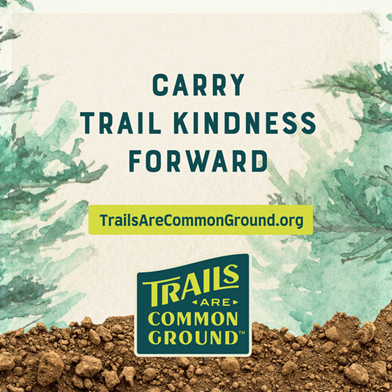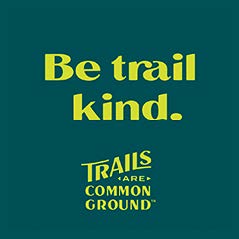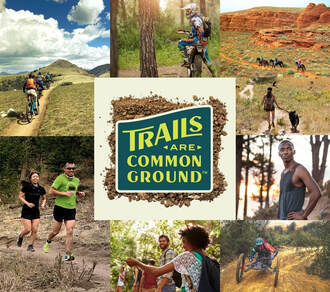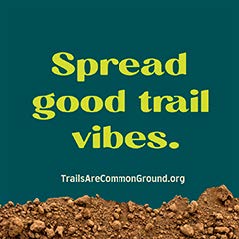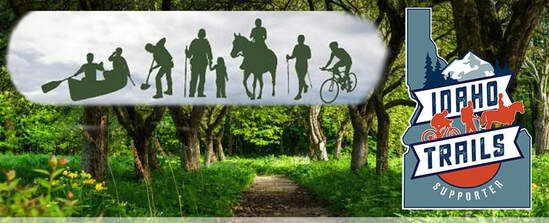Portneuf River Back Country Horsemen
Chapter Meeting, Tuesday, July 9th at 6:30 PM,
Fish and Game Conference Room, 1345 Barton Road.
Our chapter will be developing plans for repairs on the Big Springs Campground Horse Corrals.
Nine years ago, our chapter did repairs on the corrals at the two campsites and the corral that is available when renting the Pebble Guard Station. Here are videos I took at that time.
|
|
|
June 15, Lead Draw Trail Reroute Volunteer Day
Sponsored by Westside Ranger District, Caribou-Targhee National Forest
I am not sure if this was considered the ground breaking ceremony
but it is a momentous occasion.
Dave Fogle and Debra McFarren working with Westside Rangers on new trail.
It has taken awhile to get to this point. Here is a brief history. On March 30, 2021 the Lead Draw Trail #109 was closed to protect public safety due to unsafe conditions related to recreational target shooting. On July 8th District Ranger Kim Obele posted a public notice that presented several possible trail reroutes along the ridge south of Lead Draw. Public feedback ended on July 26th. Around this time, the Westside Ranger District re-graveled the Lead Draw parking lot.
On November 9, 2022 a letter from Kim Obele proposed not only the new trail but also the installation of vault toilets, picnic tables, fire ring, covered pavilion and a sign kiosk. The comment period ended December 12th 2022.
The next steps for this project was the completion of a Hydrology Specialist Report for Environmental Assessment (dated 2/22/23), a Biological Evaluation and Wildlife Specialist Report (dated 4/27/23), a Recreation and Trails, Visual Quality Management (VQM), Wilderness Potential/Roadless Specialist Report (dated 10/6/23), and an Environmental Assessment (dated 1/10/24)
On November 9, 2022 a letter from Kim Obele proposed not only the new trail but also the installation of vault toilets, picnic tables, fire ring, covered pavilion and a sign kiosk. The comment period ended December 12th 2022.
The next steps for this project was the completion of a Hydrology Specialist Report for Environmental Assessment (dated 2/22/23), a Biological Evaluation and Wildlife Specialist Report (dated 4/27/23), a Recreation and Trails, Visual Quality Management (VQM), Wilderness Potential/Roadless Specialist Report (dated 10/6/23), and an Environmental Assessment (dated 1/10/24)
|
Vertical Divider
|
John Carlson and his daughter Hailey joined other volunteers on National Trails Day for a project working to improve the West Fork Mink Creek Trail. John reports that the project was well organized. Most of the crew worked on filling in bridge approaches to help keep them from eroding into the creek. John and his daughter focused on clearing brush further up the trail. |
Vertical Divider
|
|
|
To join our chapter click on MEMBERSHIP in the ribbon above. Benefits of membership include contributing to trail improvement around Pocatello, educational opportunities, guided trail rides, and the satisfaction of protecting our American trails for future generations.
[email protected], (208) 352-0523 |
Spring, Summer and Fall are great months to take our horses and explore Idaho. Here is a brief video on why Idaho is so great outdoors.
Trails are Common Ground, Spread Good Trail Vibes, Be Trail Kind
|
Trails are Common Ground was originated and continues to be facilitated by the International Mountain Bicycling Association (IMBA) However there as been input from more than 20 organizations, as well as outdoor industry brands, land managers, representatives with BIPOC communities, and adaptive trail users
|
Coalition members represent all manner of activities that take place on natural surface trails, including hiking, equestrian, trail running, mountain biking and motorcycle single-track.
|
|
Contributor receives a sticker, showing their support for Idaho trails. The Trails Supporter funds will be managed by the Idaho Department of Parks and Recreation (IDPR) and used for priority projects identified by the department, partner groups and the public. IDPR will work with partners to ensure needed projects are completed, with an emphasis on signage and trail clearing. Annual Minimum Donation $10
|
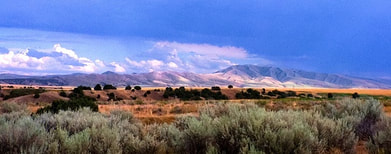
Idaho is blessed with thousands of square miles of open public land. However, access to the back country is by a network of fragile trails. Just as our roads need constant repair so do back country trails. When trails become washed out or blocked by natural downfall and overgrowth, people stop using them. Under use of a trail is as bad as over use. Horse back riders, hikers, back packers, mountain bikers, and trail runners, all share the same trail. PRBCH would like to promote cooperation among these trail users through planning, volunteer service, public education, and negotiation with government agencies.
The Federal government owns 61.6% of Idaho, only exceeded a little bit by Utah 64.9%, and a lot by Alaska 84.9%. Idaho has the greatest percent of its land in national forests 38.2%. And, while only 2.58% of the lower continental United States is designated as wilderness, Idaho contains 4.8 million acres of wilderness, 3rd largest in the U.S..






